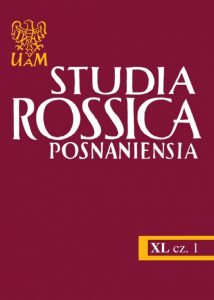Употребление форм „члов чь”, „члов чьскъ”, „члов чьскыи” в „Архангельском Евангелии” 1092 года в связи с историей возникновения текста рукописи
Usage of„члов чь", „члов чьскъ", „члов чьскыи" in the"Archangelsk Gospel" of 1092 in relation to the history of its creation
Author(s): Zofia SzwedSubject(s): Theoretical Linguistics, Applied Linguistics, Philology
Published by: Uniwersytet Adama Mickiewicza
Summary/Abstract: The Archangelsk Gospel is a manuscript which is based on two original works. The authors of the two basic parts of the Archangelsk Gospel used the texts of differently edited Aprakos. One of the copyists used a short version of Aprakos, while the other used its complete version. This double provenance is reflected in orthographic, morphological, lexical and word-formation differences between the two parts of the gospel. This article discusses the usage of ćlovećb, ćlouećbskb and ćlovećbskyj in the context of the lectionary's creation.
Journal: Studia Rossica Posnaniensia
- Issue Year: 40/2015
- Issue No: 1
- Page Range: 247-258
- Page Count: 12
- Language: Russian

